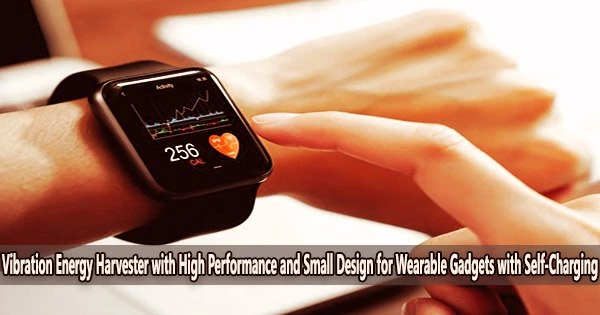Wearable gadgets refer to electronic devices that can be worn on the body, typically in the form of accessories such as watches, bracelets, and glasses, among others. These devices are designed to track and monitor various aspects of the wearer’s health and fitness, such as heart rate, steps taken, sleep quality, and calories burned.
Walking can boost not only your own energy but also, potentially, the energy of your wearable electronic devices.
Researchers from Osaka Metropolitan University developed a dynamic magnifier-enhanced piezoelectric vibration energy harvester that can amplify power from impulsive vibrations, such as those caused by human walking, by about 90 times while remaining as compact as currently developed energy harvesters. This invention represents a significant step toward the development of wearable devices that can recharge on their own. The results were published in Applied Physics Letters.
People carry various electronic gadgets on them now, including cellphones, and wearable technology is predicted to become more commonplace in the near future. Energy harvesting, a technology that transforms energy like heat and light into electricity that may power small devices, is receiving more attention as a result of the increased demand for more effective recharging of these gadgets.
Given that it can convert kinetic energy from vibration into electricity and is unaffected by weather or environment, a type of energy harvesting known as vibration energy harvesting is seen to be extremely practical.
Since electronic devices are expected to become more energy-efficient, we hope that this invention will contribute to the realization of self-charging wearable devices.
Professor Takeshi Yoshimura
A research team led by Associate Professor Takeshi Yoshimura from the Graduate School of Engineering at Osaka Metropolitan University has developed a microelectromechanical system (MEMS) piezoelectric vibration energy harvester that is only approximately 2 cm in diameter with a U-shaped metal component called a dynamic magnifier.
The novel harvester allows for an improvement in power conversion from impulsive vibrations, which can be produced by human walking motion, of around 90 times when compared to conventional harvesters.
The group has been working on creating vibration energy harvesters that make use of the phenomena known as the piezoelectric effect, which occurs when certain kinds of materials generate an electric charge or voltage in response to applied pressure.
They have so far been successful in harnessing mechanical vibrations of a consistent frequency, such as those produced by motors and washing machines, to produce power at the microwatt level.
Nevertheless, when applied vibrations are impulsive and nonstationary, like those produced by human movement, the power output of these harvesters is significantly reduced.
The team created and included the U-shaped vibration amplification component under the harvester as a solution to this problem. The element made it possible to increase power generation without enlarging the gadget.
In order to power small wearable devices like smartphones and wireless headphones, the technology is projected to create electric power from non-steady vibrations, including walking motion.
Professor Yoshimura concluded, “Since electronic devices are expected to become more energy-efficient, we hope that this invention will contribute to the realization of self-charging wearable devices.”
















